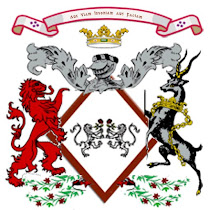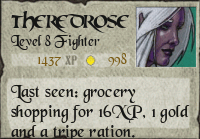Here is the carriage to the event: http://slurl.com/secondlife/Magna%20Carta/53/214/37
Music to be provided by the fabulous Icarus Ghost!
As is my custom, we will begin the evening with a celebration of my Clan and the Knights of the Order of the Red Rose, and then lighting of the Beltane Need Fire. Each guest will also be offered a Beltane lamp which will light as s/he approaches the Need Fire. This light should be taken to his/her own hearth at the end of the festival.
As is always the case, I invite you to let go of the formality of day to day life and celebrate freely the renewal of the earth, the fertility of your lands, your livestock, yourselves. Release your inner, May Queen, Green Man, White Lady, Blue Man, Roman God/Goddess, or Færiekind. Dress is quite relaxed - and clothing generally becomes optional as the fever pitch around the fire grows. There will be discrete areas available for your own fertility rites to be celebrated.
In Scottish Gaelic the month of May is known as either (An) Cèitean or a' Mhàigh, and the festival is known as Latha Bealltainn or simply Bealltainn - meaning ‘bright/sacred fire’. The holiday was held to mark and celebrate the blossoming of spring, and coincided with the ancient pastoral event of moving livestock into their summer grazing fields. It did not occur on any fixed solar date (the tradition of solstices and equinoxes is later in origin) but tended to be held on the first full moon after the modern 1st of May. Some sources suggest that the blooming of the Hawthorn was the primary signal for the event before the development of centralized calendars.
It was nearly entirely a celebration of the fertility of the land and their animals. The main traditional element which was common to all Beltane festivals was the fire which gave it its name. All the fires of the community would be extinguished and a new, sacred ‘Need Fire’ was lit by either the village head or spiritual leader. From this source one or two bonfires were lit, and the animals of the community would be driven through or between them. It was believed that the smoke and flame of the fires would purify the herd, protecting them in the year to come and ensuring a good number of offspring. The inhabitants of the village would then take pieces of the fire to their homes and relight their hearths, and dance around or near the bonfires to ensure good portents for them and their families.
This spring/summer rite was celebrated in many ancient cultures. Some continue it even in modern times. In many traditions the focus of Beltane is on the battle between the May Queen and the Queen of Winter. The May Queen can be recognized as Flora, the goddess of the flowers, and the young blushing bride, and the princess of the Fae. She is Lady Marian in the Robin Hood tales, and Guinevere in the Arthurian cycle. She is the embodiment of the Maiden, of mother earth in all of her fertile glory. Beltane has a long history. The Celtic fire festival is celebrated with bonfires, Maypoles, dancing, and lots of good old fashioned sexual energy. In Ireland, the fires of Tara were the first ones lit every year at Beltane, and all other fires were lit with a flame from Tara.
The Romans celebrated the Floralia, or festival of flowers, which consisted of three days of unbridled sexual activity. Participants wore flowers in their hair (much like May Day celebrants later on), and there were plays, songs, and dances. At the end of the festivities, animals were set loose inside the Circus Maximus. Land owners would have often have sex in their fields to ensure the fertility of their lands.
The entity known as the Green Man, strongly related to Cernunnos (The Horned God), is often found in the legends and lore of the British Isles, and is a masculine face covered in leaves and shrubbery. In some parts of England, a Green Man is carried through town in a wicker cage as the townsfolk welcome the beginning of summer. Impressions of the Green Man’s face can be found in the ornamentation of many of Europe’s older cathedrals, despite edicts from local bishops forbidding stonemasons from including such pagan imagery.
A related character is Jack-in-the-Green, a spirit of the greenwood. References to Jack appear in British literature back as far as the late sixteenth century. Sir James Frazer associates the figure with mummers and the celebration of the life force of trees. Jack-in-the-Green was seen even in the Victorian era, when he was associated with soot-faced chimney sweeps. At this time, Jack was framed in a structure of wicker and covered with leaves, and surrounded by Morris dancers. Some scholars suggest that Jack may have been a ancestor to the legend of Robin Hood.
This festival is also seen as a time when the veil between worlds is a bit thinner - a time for the faeries. The appearance of flowers around this time of year heralds the beginning of summer and shows us that the fae are hard at work. In early folklore, the more helpful deeds of the fae should always be acknowledged and appreciated, therefore, Beltane offered a good time to leave out food and other treats for them in your garden or yard.



